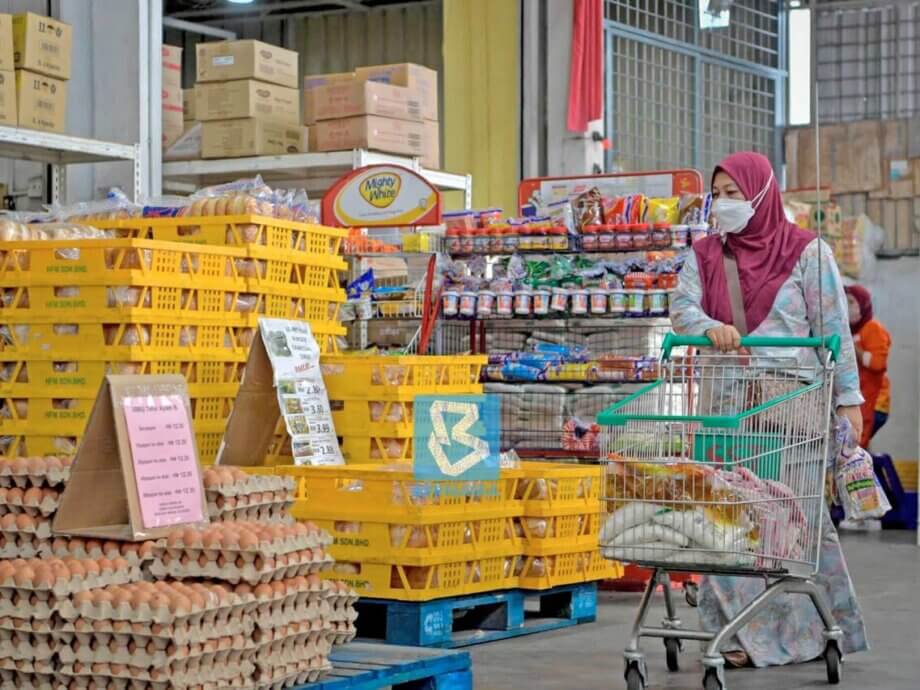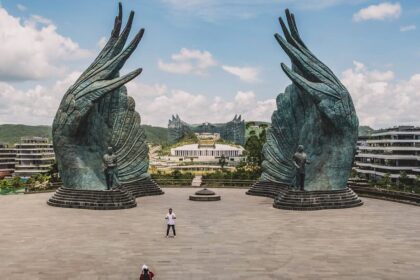The Rising Cost of Food in Malaysia: A Generational Shift
In 2024, Malaysian households are grappling with a stark reality: the same basket of food that cost RM30.90 in 1980 now requires RM100. This threefold increase, as reported by the Department of Statistics Malaysia (DOSM), has eroded the purchasing power of families by nearly 70% over the past five decades. Food inflation is not just a matter of higher prices—it is fundamentally altering how Malaysians live, eat, and plan for the future.
- The Rising Cost of Food in Malaysia: A Generational Shift
- Who Feels the Pinch? The Uneven Burden of Food Inflation
- Why Are Food Prices Rising? Local and Global Drivers
- Changing Eating Habits: From Home Cooking to Eating Out
- The Health Toll: Malnutrition, Obesity, and the Double Burden
- Wages, Subsidies, and the Limits of Government Support
- Food Security and the Future: Policy Responses and Resilience
- In Summary
While Malaysia’s official inflation rate may appear moderate compared to some regional neighbors, the impact of food price hikes is deeply felt, especially among lower- and middle-income groups. The Consumer Price Index (CPI) for food and beverages grew by 3.2% between 2010 and 2024, but the real story lies in how these increases are reshaping household budgets, nutrition, and well-being.
Who Feels the Pinch? The Uneven Burden of Food Inflation
Food inflation does not affect all Malaysians equally. According to the DOSM’s Food Security report, the bottom 40% (B40) of households—those earning below RM5,250 per month—now allocate over 71% of their expenditure to daily necessities, with food being the largest component. Middle-income (M40) and top 20% (T20) households spend 67% and 64% respectively, but the impact is most acute for those with the least financial flexibility.
On average, Malaysian households spent RM841 per month (16.3% of total expenditure) on food and beverages in 2022, the highest among all spending categories. For many, this means cutting back on non-essentials like clothing, entertainment, and travel just to afford basic meals. The situation is even more dire in urban areas, where families cannot supplement their diets with homegrown produce and must purchase everything they eat.
Dr. Oh Ei Sun, Senior Fellow at the Singapore Institute of International Affairs, explains:
“Food expenses alone can constitute up to 20% of household income, rendering price increases in this sector especially burdensome. Inflation in Malaysia tends to be gradual but persistent, often outpacing wage growth and leading to affordability challenges for many households.”
For the B40 group, the challenge is not just about higher prices, but about survival. Many are forced to make difficult choices, such as reducing meal frequency, substituting nutritious foods with cheaper, less healthy options, or even skipping meals altogether.
Why Are Food Prices Rising? Local and Global Drivers
The surge in food prices is driven by a complex web of local and global factors. Malaysia is a net food importer, making it vulnerable to international price shocks. The ongoing conflict between Ukraine and Russia—both major exporters of grains and fertilizers—has disrupted global supply chains, pushing up the cost of staples like rice, wheat, and chicken feed. Currency fluctuations, particularly the weakening of the ringgit, have further increased the cost of imported food.
Climate change is another critical factor. Unpredictable weather patterns, severe flooding, and droughts have damaged crops and reduced yields. In December 2022 alone, Malaysia’s agriculture and agro-food sectors suffered losses of nearly RM112 million due to monsoon weather. Rising sea levels threaten paddy fields in key rice-producing states, while temperature shifts are projected to reduce rice yields by up to 33% by 2030.
Dr. Ahmed Razman Abdul Latiff, economic analyst at Putra Business School, notes:
“External factors like climate change have disrupted agricultural yields, leading to increased food prices, while geopolitical tensions have contributed to supply chain disruptions, further elevating costs. At home, a weaker ringgit has made imports more expensive, affecting the prices of essential goods and services.”
Even within Malaysia, regional disparities exist. Households in urban centers like Kuala Lumpur, Johor Bahru, and Penang face higher food prices than those in rural areas, compounding the challenges for city dwellers who already spend a larger share of their income on food.
Changing Eating Habits: From Home Cooking to Eating Out
Food inflation is not only changing what Malaysians eat, but also how they eat. According to research by the Khazanah Research Institute, there has been a notable shift from home-cooked meals to eating out at restaurants, cafés, and street stalls. While eating out offers convenience, it is also more expensive and often less nutritious.
The price of food away from home has been rising faster than food prepared at home. This trend is particularly concerning because frequent consumption of restaurant or street food is associated with higher calorie intake and poorer diet quality. For low-income families, the cost of eating out can quickly become unsustainable, yet the pressures of urban life and long working hours often leave little choice.
Moreover, as food prices rise, many households are forced to substitute fresh produce, dairy, and protein-rich foods with cheaper, calorie-dense alternatives like instant noodles, fried foods, and sugary drinks. This “nutrition transition” is contributing to a dual burden of malnutrition and obesity, especially among children in low-cost housing areas.
The Health Toll: Malnutrition, Obesity, and the Double Burden
The consequences of food inflation extend far beyond the wallet. Studies by Universiti Malaya’s Social Wellbeing Research Centre and UNICEF have documented a worrying rise in both undernutrition and obesity among Malaysian children. In low-income urban communities, nearly half of families reported increasing their consumption of instant noodles in 2023, up from 40% during the pandemic. As a result, 15% of children under five are underweight, 22% are stunted, and 23% are overweight or obese.
This paradox—where malnutrition and obesity coexist—is known as the “double burden” of malnutrition. It arises when families, unable to afford balanced diets, rely on cheap, energy-dense foods that are high in fat, sugar, and salt but low in essential nutrients. The long-term health implications are severe, including higher rates of diabetes, heart disease, and hypertension.
Dr. Amjad Rabi, co-author of a study on food affordability, highlights the affordability gap:
“While a minimum-wage worker in the Netherlands needs only four minutes of labour to buy one litre of milk, a Malaysian worker must work for 58 minutes to afford the same amount. This affordability gap forces many households to substitute unhealthy, calorie-dense alternatives such as instant noodles and fried foods, which are cheaper but nutritionally inadequate.”
For many families, especially those in urban areas, the struggle to provide even three meals a day is real. A UNICEF study found that 52% of children in low-income households in Kuala Lumpur ate fewer than three meals a day, a sharp increase from pre-pandemic levels.
Wages, Subsidies, and the Limits of Government Support
One of the most persistent challenges is that household incomes have not kept pace with rising food costs. While the government has implemented subsidies and price controls on key items like rice, cooking oil, and electricity, these measures are often insufficient to offset the broader structural issues.
Malaysia’s minimum wage, set at RM1,500 per month, remains below the “living wage” benchmark of RM2,600 proposed by Bank Negara in 2018. Wage growth has been slow, and many workers lack the bargaining power to negotiate better pay. As a result, even modest increases in food prices can have outsized effects on household budgets, especially for the B40 and M40 groups.
Subsidies, while helpful in the short term, are not a sustainable solution. In 2022, Malaysia spent RM77.7 billion on subsidies—about 27% of federal government revenue. As fiscal pressures mount, the government is shifting towards more targeted assistance, such as cash handouts for vulnerable groups. However, gaps remain, with many families in need not receiving adequate support.
Samuel Tan, CEO of Olive Tree Property Consultants, points out:
“Lower-income households, particularly those in the B40 income group, are the hardest hit. This group benefits from various government subsidies and assistance programmes. However, the M40 group, which earns between RM5,250 and RM11,819 per month, faces a particular challenge, as they receive fewer subsidies and their income often falls short of meeting rising costs. Greater support for this segment is needed.”
Food Security and the Future: Policy Responses and Resilience
Food security in Malaysia is no longer just about self-sufficiency in rice or other staples. It is about ensuring that all Malaysians have access to affordable, nutritious food, regardless of income or location. The government has taken steps to diversify food sources, invest in sustainable agriculture, and strengthen supply chain infrastructure. However, experts warn that these efforts must be complemented by broader economic reforms.
Key policy recommendations include:
- Raising the minimum wage and linking it to inflation to ensure incomes keep pace with rising costs.
- Expanding and improving the delivery of social assistance, including school feeding programs and universal childcare allowances.
- Investing in climate-resilient agriculture, such as weather-resistant crop varieties and efficient water management systems.
- Promoting financial literacy and education to help households better manage their finances and make healthier food choices.
- Encouraging local food production to reduce dependency on imports and buffer against global price shocks.
Dr. Nazrul Hazizi Noordin of IIUM emphasizes the need for a sustainable approach:
“Malaysia needs a sustainable approach to food security, focusing on strengthening the agricultural sector. Without comprehensive reforms, middle- and lower-income households will continue to bear the brunt of the economic strain.”
International organizations like the Asian Development Bank have found that government aid is the most effective strategy for reducing food insecurity among vulnerable groups. However, as Malaysia’s population ages and urbanizes, the challenge will be to ensure that support reaches all who need it, including retirees, people with disabilities, and those living in high-cost urban areas.
In Summary
- Food inflation in Malaysia has tripled the cost of basic food items since 1980, eroding household purchasing power by nearly 70%.
- The burden is greatest on low- and middle-income families, who now spend the majority of their income on food and daily necessities.
- Global factors (such as the Ukraine-Russia conflict and climate change) and local issues (like wage stagnation and a weak ringgit) are driving up food prices.
- Rising costs are forcing families to cut back on nutritious foods, leading to a double burden of malnutrition and obesity, especially among children.
- Government subsidies and price controls provide some relief but are not a long-term solution; comprehensive reforms are needed to address wage growth, social protection, and food system resilience.
- Policy responses must focus on raising incomes, expanding social assistance, investing in sustainable agriculture, and promoting financial literacy to ensure food security for all Malaysians.












